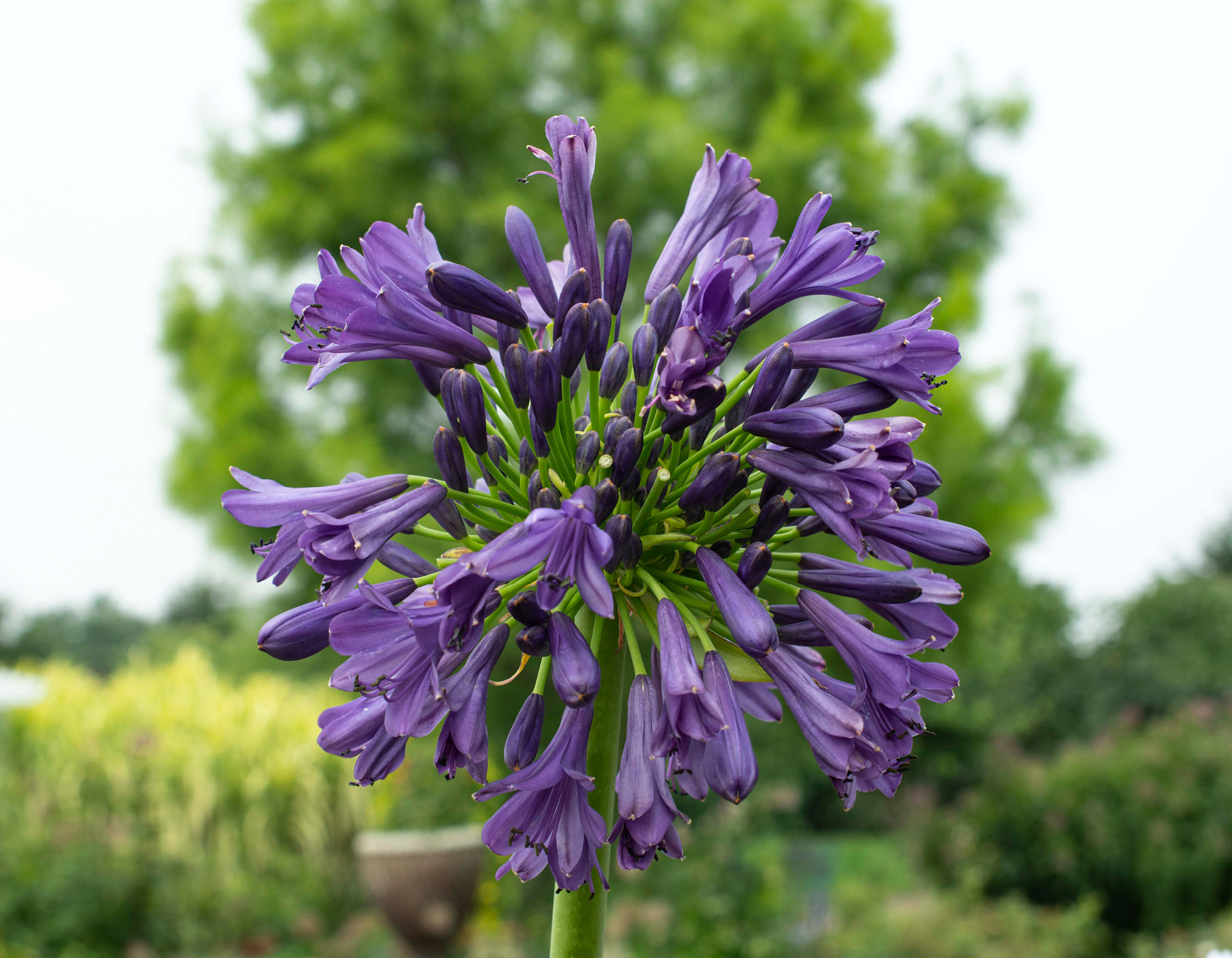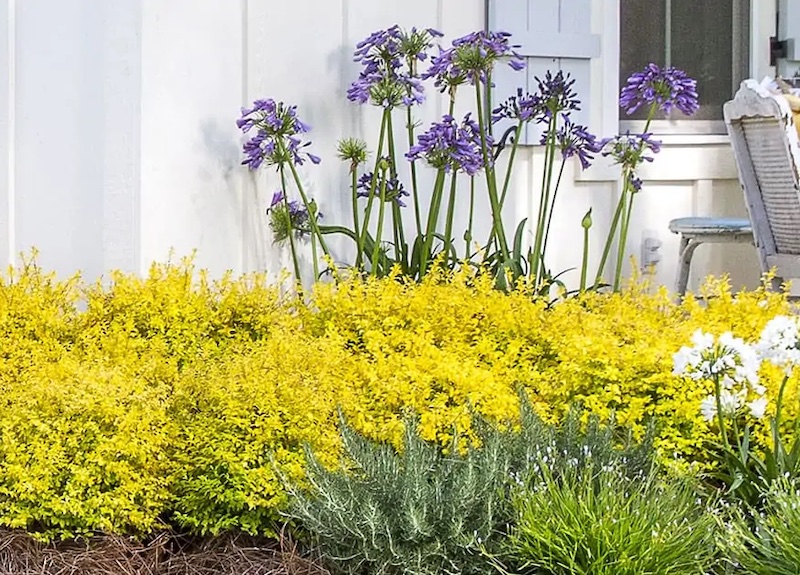Agapanthus Growing Problems: Soil, Sunshine, and Watering
Agapanthus Growing Problems: Soil, Sunshine, and Watering
Blog Article
Releasing the Secret to Successful Agapanthus Farming: Advice for a Flourishing Garden
In the world of gardening, cultivating agapanthus efficiently requires a strategic technique that includes various aspects of plant treatment. By understanding the subtleties of agapanthus growing, one can create an atmosphere where these plants grow and bloom abundantly.
Planting Agapanthus: Best Practices
When planting Agapanthus, correct dirt preparation is necessary for making certain effective growth and development of these beautiful blossoms. Agapanthus, frequently called Lily of the Nile or African lily, prospers in well-draining dirt with a slightly acidic to neutral pH level - Agapanthus. Prior to planting, it is vital to amend heavy clay soils with raw material such as garden compost or peat moss to boost water drainage and give essential nutrients for the plants
To grow Agapanthus, select a place that gets full sunlight to partial shade, as this will advertise healthy growth and bountiful blooming. Dig an opening two times the size of the plant's root ball and position the Agapanthus at the same depth it was previously expanding. Gently backfill the hole with dirt, weighing down securely to remove any air pockets around the roots.
Water the newly planted Agapanthus extensively and continue to keep the soil equally wet, specifically throughout the plant's active expanding season. Agapanthus. Applying a well balanced plant food once a month can better support the plant's growth and flowering. By complying with these finest techniques for growing Agapanthus, you can produce a magnificent display screen of these fascinating flowers in your garden
Suitable Soil Issues for Agapanthus
For optimum development and blooming success of Agapanthus plants, guaranteeing the soil conditions are suitable is important. Agapanthus likes dirt that is rich in nutrients, so integrating a balanced fertilizer throughout the growing season can advertise healthy development and dynamic blooms.

Watering and Fertilizing Tips
To make sure healthy and balanced development and lively blooms, proper watering and feeding strategies are important for effective Agapanthus cultivation. Agapanthus plants profit from normal watering, particularly during the growing season. It is recommended to water deeply once a week, ensuring the soil is damp yet not waterlogged. Throughout hot climate or in pots, more frequent watering may be required to stop the soil from drying out totally.
When it pertains to fertilizing Agapanthus, a well balanced fertilizer with equal components nitrogen, phosphorus, and potassium can be used in the spring to advertise healthy growth additional info and blooming. Slow-release see here fertilizers are optimal for offering nutrients progressively over a prolonged period. Stay clear of over-fertilizing, as this can lead to too much foliage development at the expenditure of blooms.
Furthermore, incorporating natural matter like garden compost into the soil can enhance nutrient degrees and enhance soil framework, aiding in the total health and wellness of the Agapanthus plants. By following these watering and fertilizing pointers, gardeners can guarantee their Agapanthus plants grow and produce magnificent display screens of flowers.
Trimming and Deadheading Strategies
Correct pruning and deadheading methods play a crucial function in keeping the health and wellness and aesthetics of Agapanthus plants, matching the crucial techniques of watering and fertilizing for successful growing. Trimming Agapanthus includes eliminating invested flower heads, yellowing or dead leaves, and general shaping of the plant to promote much better development. Deadheading, the process of eliminating faded blossoms, not just enhances the plant's look yet also motivates more flowering.
When deadheading Agapanthus, it is suggested to snip off the flower stem at the base making use of sharp, tidy shears. This process redirects the plant's power from seed production back into origin and vegetation development, advertising a healthier and much more durable plant. Regular deadheading can prolong the flowering duration of Agapanthus and stop self-seeding, which can bring about overcrowding.
In terms of pruning, Agapanthus normally advantages from a light trim after blossoming to clean up the plant and encourage fresh development. Cutting back the spent flower stems and removing any kind of dead or broken foliage helps keep the plant's published here vitality and overall appearance. However, it is vital to prevent cutting right into the crown of the plant, as this can deteriorate its wellness.

Protecting Agapanthus From Vermins and Diseases
Applying efficient insect and disease monitoring methods is crucial to guarding the health and wellness and vitality of Agapanthus plants in farming. Agapanthus are normally sturdy plants, but they can still come down with numerous insects and diseases otherwise correctly looked after. One typical pest that influences Agapanthus is the Agapanthus borer, a caterpillar that tunnels right into the plant, triggering damages to the blossoms and leaves. To protect against invasions, normal assessment of the plants is important. If borers are identified, they can be by hand removed, or insecticidal soap can be utilized as a control step.
In enhancement to insects, Agapanthus are vulnerable to illness such as origin rot and fungal fallen leave spots. By staying watchful and addressing insect and illness concerns immediately, gardeners can aid their Agapanthus flourish and grow.

Verdict
In verdict, effective growing of agapanthus needs appropriate planting techniques, optimal soil conditions, ample watering and feeding, routine pruning and deadheading, and protection from insects and illness. By adhering to these methods and tips, garden enthusiasts can make sure a growing yard filled with stunning agapanthus flowers. Agapanthus. Remember to keep consistent care and interest to information to advertise the health and wellness and durability of these stunning plants
When planting Agapanthus, appropriate dirt preparation is essential for making sure successful development and growth of these lovely blossoms.Water the recently planted Agapanthus completely and continue to maintain the soil equally damp, specifically throughout the plant's energetic growing season.For ideal growth and flowering success of Agapanthus plants, guaranteeing the dirt conditions are excellent is essential. When planting or transplanting Agapanthus, make sure the soil is well-prepared to provide the required structure for the plants to develop themselves successfully. One usual pest that affects Agapanthus is the Agapanthus borer, a caterpillar that tunnels right into the plant, creating damage to the fallen leaves and flowers.
Report this page